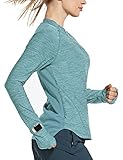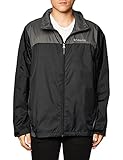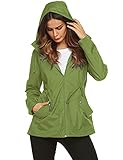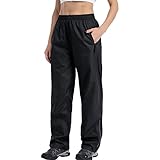Table of Contents
Overview
Whether you hate or love shopping, you’re bound to get down to some really extensive research-backed shopping for your trekking trips.
And if you’re thinking hiking and trekking are the same things so you can pull on a random hiking outfit, grab a bottle of water and go for it… you’re kinda wrong!
Trekking is a more intense form of hiking that is both more demanding and grueling, and you can’t wear hiking clothes for it. It necessitates you to pack properly, shop diligently, and focus on key factors such as the weather forecast, day/night temperatures, and the length of your hiking trip.
Definition of trekking
If hiking is a trip to Disneyland, trekking is a weekend getaway to Cabo! Both are technically vacations in a sense of the word… but one requires you to do some serious packing and planning.
Trekking can take up to a couple of months, even if you are willing to make the commitment. This activity is not just for clearing your head and taking an hour or two breaks from your responsibilities. Nope, it’s more than just a one-day hike!
It’s cooking your own food, navigating the wilderness, self-treating potential wounds/injuries with a hiking first aid kit, sleeping on hard ground… etc.
Importance of Proper Hiking Clothing for Trekking
Due to the demanding nature of the sport and the location of where you are planning to trek, how you choose your hiking gear is essential in making or breaking your experience.
For example, if you are winter hiking in a chilly region and improperly pack lighter clothes, then you’re probably going to spend the majority of your trip shivering. You could also get very sick.
Your choice of hiking essentials determines your comfort, ease of mobility, and in many cases, your health too.
How to Layer Clothes for Trekking
Layering clothes is your number 1 trick to protecting your body from the elements and staying both dry and warm during the entirety of your trek trip.
Base Layers
Your first layers are your base layers, and they go directly on your skin. They’re supposed to snugly fit and come in different materials with varying specifications to suit different days and weather conditions.
- The function of base layers
The first layer you wear is supposed to keep you dry and warm. Since a lot of physical activity is involved with trekking, you’re bound to perspire. Without a proper base layer, you could not only sweat through your jacket, but you could also catch a cold out in the open with damp clothes.
- Materials for base layers (synthetic vs. wool)
A majority of base layers are available in either woolen or synthetic material. Where woolen base layers are mistaken to be for very cold temperatures, there are thin merino wool base layers that are fit for slightly warmer weather as well. However, the shortcoming of wool is that it takes longer to dry if it gets damp.
Synthetic materials, on the other hand, are very quick to dry and are available in a variety of different textures, warmth, and colors. But they do tend to let off a bad smell when damp with perspiration.
- Examples of base layer clothing (tops and bottoms)
Shirts with full sleeves or short sleeves can be worn as your base layers. In fact, any merino long sleeve shirt makes a perfect choice as they reduce moisture absorption and wick away sweat quickly.
Hiking shirts
On the other hand, tights, briefs, and long johns are worn as pants depending on the circumstances you are exposed to.
Insulating Layers
The middle layers (also referred to as insulating layers) are the barricade between the outside elements and your body. They are made of different materials, and their functionality is purely dependent on how efficiently that material works to trap body heat.
- The function of insulating layers
As the base layer wicks away body moisture and prevents it from seeping into the other layers, the insulating layer’s job is to trap the wearer’s body heat in between the layers. In that way, you stay warm and dry.
- Materials for insulating layers (down, synthetic, or fleece)
For a mid-layer with different variations and styles, polyester fleece has light, mid, and heavyweight options, and even if dampened with perspiration, it keeps the wearer warm. It’s highly breathable and maintains a moderate level of warmth throughout, and dries quickly.
A down-insulated jacket is generally very warm in comparison and takes up minimal space during packing. A majority of them also offer wind and water resistance.
Lastly, synthetic layers are similar to fleece in the sense that they can withstand heavy rain or moisture and still provide optimum warmth. But they do tend to be bulky.
- Examples of insulating layer clothing (jackets and pants)
Hiking pants are the best choice for mid-layer trousers as they provide enough room for a base layer underneath and still don’t bulk up too much on your legs.
Hiking pants
Jackets
For top options, you have a variety of options ranging from a sweater, fleece jacket, a technical hiking shirt (preferably full-sleeved), and soft shells.
Outer Layers
The last layer that you pull on usually is waterproof and wind resistant to provide protection against storms, rain, and cold temperatures.
- The function of the outer layers
Outer layers mostly allow perspiration through and are externally immune to the elements. Wherever you may be trekking, the last layer acts like a bubble against everything.
- Materials for outer layers (waterproof and breathable)
A waterproof rain jacket layer is basically impenetrable, even if it’s raining buckets. Moisture cannot make its way inside. These options are mostly pricey and not high on breathability. Perfect for colder weather.
Water-resistant layers are best for only slightly cold temperatures where high activity levels are required. They are made of polyester or woven nylon and are immune to light rain showers and breezy conditions.
- Examples of outer layer clothing (jackets and pants)
Rain jackets and shell jackets are both available in waterproof and water-resistant options. They have different price tags and weights with separate specifications depending on the trek area, potential warmer weather conditions, and how active you wish to be while wearing them.
Rain jackets
For bottoms, rain pants are essentially your best choice, with some having a parachute exterior that creates a barrier against all external conditions. These are usually baggy to accommodate the hiking pants and base layers you are probably wearing underneath.
Rain pants
Other Accessories
Here is a list of other accessories that may aid to make your trekking experience better:
- Headwear
Whereas beanies, we are all familiar with their cut and style, are closed at the top and cover the ears and keep the head warm – buffs are a bit different in their approach.
More practical and open to being used in multiple ways, buffs are tube-like in shape and can either be worn from the nose downwards to the neck or on the head. Buffs are open-ended, so it’s best for those who want some warmth with some ventilation.
- Gloves
Depending on the nature of your trek trip, gloves play an important role. If you will be using your hands a lot, you will need a warm yet thin and lightweight glove to ensure that your hands stay warm but also not stiff and bulky due to the material pileup.
Waterproof gloves aren’t the most practical but have excellent water and wind-blocking capabilities while also providing extra sun protection.
On the other hand, thinner wind-blocking gloves are more functional, but if you’re trekking in cold weather, then your fingers are bound to get a bit nippy.
- Socks
When it comes to hiking socks, the same principle concerning base layers applies. Synthetic materials are more likely to dry quickly and provide practicality swiftly. However, wool socks for those concerned with their warmth are bound to get damp in your hiking shoe and take ages to dry.
It is advised to pack extra socks and always keep a good pair of dry socks on you every day to keep your feet warm at night. Tough socks are recommended by many trekkers for their quick drying and functionality.
- Footwear
For slow and strenuous treks, hiking shoes are preferred as you will need to keep your feet at maximum comfort and stability. However, brisker day hikes call for lightweight trail running shoes.
For bumpy, rocky, and unkempt land, you will need stronger, bigger, and bulkier hiking footwear that will withstand the toughness and, at the same time, give you good stability.
Some people have more sensitive feet than others and are particularly interested in extra cushioning and comfy soles. While others require thin and light shoes for summer hiking, hiking sandals should never be an option for your trek days. The best hiking shoes are those that keep you comfy!
Moreover, you can also get a hold of trekking poles or even ski poles to protect your knees and increase your walking speed, especially going downhill.
- Backpack
Backpacks differ in their specifications and capacity depending on the length of your trip and how much baggage you’re carrying with you. For a one-day hike, you need a lightweight hiking backpack that has a capacity of around 5 kg.
On the other hand, longer trips have a larger capacity going up to 60 L, which can withstand up to 13 kg of weight.
Another determining factor that you must heed is the backpack’s dimensions in reference to your height. For broader backs, your backpack’s dimensions and strap lengths will also differ. On the other hand, shorter-backed people won’t fair well with broad backpacks.
Conclusion
How you choose your hiking gear, equipment, and the right hiking clothes is essential in determining whether you will enjoy your trek trip or not!
To ensure you get yourself the best hiking clothes, be it a rain jacket or one-day hiking gear… do your necessary research!
Disclaimer: Journey Beyond the Horizon is a participant in the Amazon Services LLC Associates Program, an affiliate advertising program designed to provide a means for us to earn fees by linking to Amazon and affiliated sites at no additional cost to you.
Like it? Pin it here⇓! Follow us on Facebook, Twitter and Instagram!


Hi, we are Krasen and Ying Ying. Krasen is from Bulgaria, and Ying Ying is from China. We are passionate about geography and history, and we believe that the best way to experience it is by exploring the Earth in reality, not in a school, and not virtually.
So, we created this blog Journey Beyond the Horizon, where we share geographical knowledge, travel guides and tips how to experience it when you explore our planet, and a lot of inspiration.
And we wish you a happy journey, not just virtually, but most of all- in reality.
Enjoy!





















































